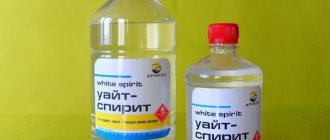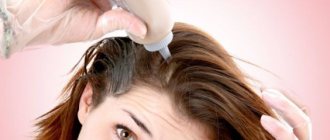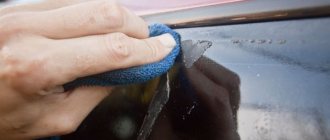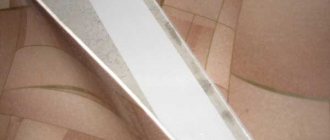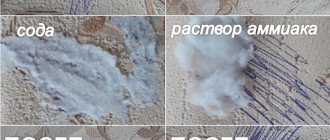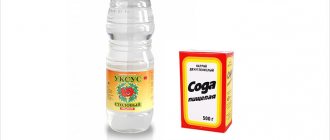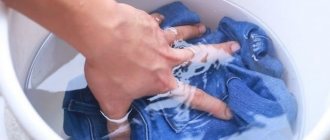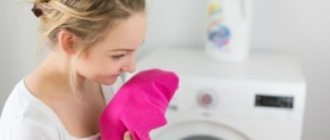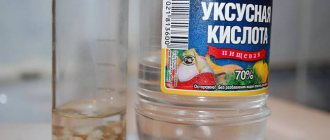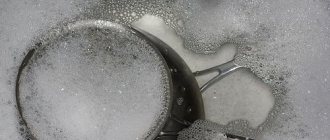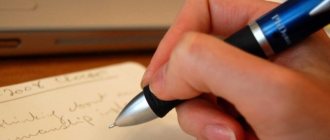DIY repairs please the eye and warm the soul. It’s a pleasure to create the embodiment of your own design ideas and anticipate enthusiastic comments from family and friends. Vibrant, fresh colors and tastefully selected wallpaper can make your home a real comfortable oasis. All that remains is to make extreme efforts to restore order, and the repair can be considered complete.
An almost inevitable nasty consequence of DIY repairs are stains of paint and primer in unplanned places. And while paint is quite easy to handle, primer deserves special attention.
Primer
Primer is a common coating designed to increase adhesion (adhesion) of the surface being treated with decorative finishing materials: tiles, wallpaper, paint, etc.
The use of a primer during finishing work is necessary; otherwise, the highest properties and, most importantly, durability of the result cannot be achieved.
Without primer, cracks will appear on the painted walls, and the wallpaper may completely fall off. So the use of a primer is not discussed, it is a must.
Naturally, the primer must be certified and have an unexpired shelf life.
The main problem with removing primer stains is that dried and hardened primer will not actually dissolve into anything.
This property occurs as a result of a chemical reaction - polymerization. Therefore, you cannot delay the process of removing stains; the fresher the primer, the easier it is to remove.
The most effective and reliable way to get rid of primer stains is to prevent them from occurring.
A painstakingly covered surface, preferably with plastic film, provides excellent protection from problems.
All joints must be sealed with masking tape. Take the time to prepare to save yourself from unnecessary hassles in the future.
But if the primer still ends up where it is not needed, the question arises, how to get rid of it? Here are some methods on how to wash off the primer.
Cleaning methods
It is very easy to clean almost any coating from the primer, if only a little time has passed since the contamination, no more than minutes. In this case, it is enough to wipe the stained area with a damp cloth or sponge. It’s great if they are ready, because the main thing is not to waste time.
But what to do if the contaminants are discovered after a significant period of time and have already hardened? The main thing is not to fall into despair, the problem can be solved, you just have to try.
First of all, you need to choose the best method based on the type of surface that has been contaminated.
Before starting work, it is advisable to carry out a test in a small, inconspicuous area.
Here is a short summary on how to remove primer from various surfaces.
Tree
You can apply a small amount of the same primer to the stained area, and then wipe it dry with crumpled paper or a rag. Then wipe the surface with a damp cloth. You should do this several times. Another option is to coat the entire surface with a primer.
Glass
Small droplets of dried primer can be removed using a nylon mesh.
The mesh is moved up and down over the stain, finally wiping with a moistened rag.
If the dirt is fresh, it can be simply removed with a damp sponge. If the soil has already dried, you can try to soften it by applying a small layer of the same primer. The stain, if it is not extremely old, will swell and can be removed with a damp cloth.
If the primer is one hundred percent polymerized and does not want to swell, it can be removed with a blade. You need to work with the blade extremely carefully, in one direction and with little pressure, so as not to scratch the glass.
If the stains are extremely complex and difficult to remove, you can resort to glass cleaning products.
This could be Hodrupa or Dopomat. These are concentrated products; before use, they must be diluted in water at a rate of 10 ml per liter of water.
The effectiveness of their implementation is accompanied by the risk of damage that may appear if the product is not completely removed.
Linoleum
The best way to avoid soiling linoleum with primer is to immediately wipe off the fresh stain with a damp sponge or rag. If this was not possible, the area of contamination should be moistened with water and covered with a moistened rag.
After a few hours, when the dirt has softened, it can be dealt with using a finely abrasive lip.
Then the area of contamination is carefully wiped with a dry cloth.
Plastic
An ideal option for quickly and easily removing soil residues from plastic coatings is vinegar essence. The main thing here is serious adherence to safety precautions. The fumes from vinegar essence can be harmful to health, so you need to wear gloves and a mask when working. The room must be well ventilated.
It is strictly forbidden to use acid-containing products; their action may cause the plastic to melt.
Ceramic tile
If possible, it is recommended to test several methods on an inconspicuous area or a separate piece of tile to find the best one.
Fresh dirt can simply be removed with a damp sponge. If the primer has dried out, it must be applied slightly fresh. The dirt will swell and soften a little, and then it can be wiped off with a rag.
The process is long and repetitive, but quite effective.
To remove old and stubborn dirt, you can use a scraper. Purchased at a construction or hardware store. Structurally, it consists of a blade with a handle. The stain of dried primer is moistened with water, and evenly, with progressive, careful movements, it is cut off with a scraper. A fine abrasive sponge will complete the operation.
We remove primer stains from various types of surfaces
So, after some time you discovered stains from the soil on the linoleum or tiles, which you did not pay attention to during the repair. What to do?
The main methods for cleaning different materials are not universal and each specific case must be approached selectively. But remember that in the end, with effort, you can clean any surface.
Glass
First, you will need to acquire the latest tools, solvents, and rags.
If the stain is more or less fresh, then you can wet the sponge in plain water and gently wipe off the stain. If the substance has already dried, coat it with the same primer and allow the surface to absorb moisture. The stain will swell and can be wiped off with a damp cloth. If the stain is so dry that this method did not help, use a blade. It will help remove any remaining dirt. Move it in one direction without applying too much pressure to avoid scratches on the glass.
Particularly heavy stains can be removed using glass cleaners. For example, Dopomat or Hodrupa. These are low foaming concentrates, which are diluted in a ratio of 10 ml per 1 liter of cold water.
It is also helpful to have an abrasive sponge, T scraper, detergent, etc. All this can be an excellent help in the fight against soil stains on windows.
Tile
How to wash away soil contamination from tiles or tiles? Experts recommend that, if possible, first try one of the methods we propose on a sample of ceramic tiles that cover your floor or wall. This makes it easier to find the best option for removing the primer.
To complete the work you will need the following tools and products: tile cleaners, soda, scraper, vinegar essence, rags.
If the soil is dry, the stain can be removed using the same material. The stain wetted with primer will become softer and swell, then it can be wiped off with a regular rag. Finally, the area must be treated with an abrasive sponge soaked in water. Stains are rubbed off gradually, so don’t be upset if it doesn’t happen instantly.
Moistened and already swollen stains can be wiped off the tiles with any rag
If the dirt is so old that it cannot be wiped off with water and a cloth, then you can use a scraper. It can be purchased at a hardware store. This tool helps remove the remaining primer from the tiles by cutting them into small pieces. Pre-moisten the stain with water, and then, using progressive movements, cut it off with a scraper at an angle of thirty degrees.
Next, take a detergent and a sponge to remove small particles of soil that could cause damage to the tiles in the future.
Linoleum
It is better to wipe off a fresh primer stain from the linoleum as quickly as possible. If this does not happen, wet the stain with water and cover it with a wet cloth. After two to three hours, the stain should soften. It can be wiped off with an abrasive sponge and then wiped dry with a rag.
Plastic
Vinegar essence is a wonderful option for quickly and easily cleaning plastic surfaces from residual primer. However, remember that in this case it is important to take precautions, because the vinegar essence, when it evaporates, releases harmful substances into the atmosphere. For this reason, you need to work in overalls, gloves and a mask. And in the residential premises itself you will need to organize good ventilation.
Do not use aggressive agents to remove primer from plastic.
Soil stains cannot be removed from a plastic surface (for example, a window sill or tabletop) with acids, otherwise it will simply melt.
The primer mixture is very caustic and will leave permanent stains if not dealt with immediately. However, if you notice the stain in time and wipe it off correctly, you can save any surface from contamination.
How to wash the primer without the help of others
The most common method is water and a sponge. But it is only suitable when the primer is fresh.
If it has managed to dry out, water cannot be used.
How can you wash the primer yourself?
Construction foam cleaner.
Helps soften dirt before using a scraper;
- Cleaning agent ATLAS SZOP. Contains acid, therefore can only be used on acid-resistant surfaces;
- Paint remover, preferably acid-free;
- Glass cleaner “Mr. Muscle”. Works great in combination with a hard sponge;
- Vinegar essence. Effective, but requires respiratory protection.
- Household steam generator. Cannot be used on glass.
The best cure for any disease is prevention.
Painstaking preparation for work, reliable protection of surfaces from unnecessary contact with primer will save you from having to rack your brains over its removal. Take the matter seriously, and the result will definitely amuse you.
Tested substances
Often, after repairs, a special solution is used to remove paints. This substance is used on various types of surfaces to remove stains from building materials. The best option is a remover that does not contain acid.
Representatives of construction companies insist on choosing one of these solvents to use:
- ethyl acetate;
- petrol;
- acetone;
- toluene;
- turpentine.
It is allowed to use the following substances for cleaning from building materials:
- acids;
- strong oxidizing agents;
- alkalis.
Do not use acids on tiles. They can be used on glass and acid-resistant surfaces. An alkali and a strong oxidizing agent, unlike an acid, have a much wider range of applications. In addition, the strong oxidizing agent contains oxides that do not harm surfaces.
What is the root of the problem
Deep penetration primer consists of polymers, water or solvents. After its application, water and solvents begin to quickly evaporate, and the polymerization process occurs. As a result, the material becomes practically insoluble. Due to this, the quality of surface adhesion increases. At the same time, problems arise in eliminating errors in the use of a primer.
Contamination can be easily removed within 30 minutes after application of the material using a wet sponge or rag. Within 2-3 days, errors can be removed using special means. After a long period of time, it is almost impossible to completely remove flaws.
Attention! The most prompt actions contribute to quick, high-quality, and easy achievement of results.
The most important, reliable recommendation is preparation before painting work. All surfaces not intended for priming must be insulated as much as possible. For protection, cover film or cellophane is used, and the joints are sealed with masking tape or tape. Also, do not forget about your own safety, purchase gloves, a face mask and protective clothing.
In practice, many people miss this important stage, including due to ignorance of simple protective measures. As a result, the task arises in finding methods that can remove the primer.
Difficulty in eliminating the consequences when using a deep penetration primer
It is quite difficult to remove the primer mixture from the coating, especially if a certain amount of time has passed. The thing is that the solution dries very quickly. After half an hour, it is very difficult to wipe off the stains with a damp cloth. After the water evaporates, the polymerization process starts, as a result of which the composition becomes completely insoluble. Therefore, it is important to wash off stains before the solution completely hardens. It is recommended to immediately wipe up stains or splashes; in this case, you can only use a cloth soaked in water.
Five means and methods for removing soil
Methods for removing primer can be divided into two types: cleaning with special means, solvents or by mechanical action. It is better to choose each method based on the composition and properties of the primer material. Therefore, do not neglect the instructions. Careful attention will help to avoid damage to the surface being cleaned.
Method 1. Soak
The easiest, fastest way is to use a wet rag or sponge. But it will only help if you apply it immediately after applying the primer.
If a couple of hours have already passed, you should try to soak it. To do this, apply a sponge or rag generously moistened with water to the stain and leave for half an hour. It is necessary to add water periodically to prevent the stain from drying out. During this time, the primer will swell slightly, making it easier to clean. Contamination is carefully removed using an abrasive sponge. Attention! Water brought to a boil begins to interact faster with the primer material, making it easier to remove.
Method 2. Scraper
After soaking, you can try to clean the primer with a scraper. This is a tool that looks like a blade with a handle and is sold with spare parts. You can find it in every hardware store. It allows you to wipe away dirt from linoleum, tiles, glazed tiles or wood.
Attention! You need to start cleaning with a scraper with extreme caution: movements should be light and not scratching. The tool should be held at an angle in the range of 30-45 degrees. After cleaning with a scraper, remaining dirt on the surface can be removed with a suitable cleaning agent.
Method 3. Soda
Soda has long been used to clean various objects. The easiest way is to dilute the powder in a small amount of water, and try to wash off the primer with the resulting mixture.
Or you can prepare the composition according to the recipe: baking soda is mixed with oatmeal in equal proportions. Stirring constantly, the mixture is diluted in water until it becomes mushy. The solution is applied to the stain and left to soak for about an hour. Then remove with a sponge with an abrasive pad.
Method 4. Treat like with like
The dried primer gets wet well and even dissolves if the same primer material is applied on top. Cleaning should take no more than 20 minutes until the new layer has hardened. Then everything is thoroughly wiped with a rag or sponge. If the composition is difficult to remove, try using a scraper.
An important point: you need to select a primer with an identical composition to the one you want to scrub off. Therefore, this method is not always appropriate.
Method 5. Special equipment
All special products can be divided into two groups: household chemicals and aggressive compounds containing acids. The simplest solutions include conventional glass cleaning agents. For exposure, they are left for about 15 minutes, then removed with a sponge. Acid-free solvents are also used: gasoline, acetone, alcohol, turpentine, 646, toluene, ethyl acetate. If these methods do not give the desired result, then resort to professional chemistry:
- Hodrupa and Dopomat concentrates. These liquids are similar in quality and composition. Before use, they must be diluted with water in the proportions specified in the instructions. In exceptional cases, use undiluted concentrate to achieve greater effect;
- Atlas Szop is considered the most effective remedy. It can even cope with dried stains of cement, plaster, and lime. However, due to the content of inorganic acids in it, the composition is not suitable for acid-resistant surfaces. It can be used for stone, ceramic, varnished, chrome-plated, clinker, and artificial materials.
Attention! Professional products are best used for cleaning large areas. This universal chemical is produced in large-volume canisters, so it is not relevant at home.
Do not neglect the instructions. The effectiveness of these compositions is combined with the risk of damage that may occur if even the slightest traces of these solvents remain.
How to remove primer from linoleum
The first and most reliable way is to wash off the dirt immediately after it hits the surface. This is done with a simple rag soaked in warm water.
If an hour or more has passed since the contamination, the task becomes more complicated: during this time the primer dries and polymerizes, becoming insoluble.
Then you will have to resort to more serious methods:
- Mechanical impact. A simple option, but there is a risk of damaging the linoleum.
- Chemistry. Cleaning products are reliable and effective. There are two disadvantages: they are not free and are toxic to humans.
- Folk remedies. An affordable and safe alternative, although its effectiveness is not guaranteed.
Mechanical methods
If you decide to clean dried primer by mechanical action, be extremely careful. The simplest method is:
- Place a rag soaked in warm water on the dirty area.
- Keep it there for 2-3 hours until the stain gets wet.
- Next, gently scrub it with a fine-grained abrasive sponge.
- The remaining primer is cleaned off with a damp cloth.
- Wipe the floor dry.
It is important to use warm water, but not hot: boiling water will cause the coating to swell and crack. If the main method does not work, then the following options remain:
- Knife blade, spatula or scraper. The dried layer is pre-moistened with water or a solvent (acetone, gasoline or turpentine). This will make the cleaning process easier and protect the surface from excessive friction. Then the primer is scraped off with a blade at an angle of 30-45 degrees. Movements should be light and careful so as not to scratch the coating.
- Steam cleaner. Primer stains on linoleum are also moistened with water or treated with a solvent. Next, a stream of steam from the device is directed to the dirty places, while simultaneously cleaning them with a hard-bristled brush.
Chemicals
It is forbidden to clean linoleum with preparations that contain alkali, acid or soda. Products based on them are effective because these components penetrate deep into the material. But for linoleum, such an impact is guaranteed damage to its appearance. Moreover, the structure of the material also collapses, causing it to become brittle and brittle.
A drug suitable for its composition must be tested in advance before use. This is done in an area inconspicuous to the eye, or even better - on an unused piece of coating. Cleaning is carried out in a respirator and with the windows open (for the flow of clean air). Protective gloves on your hands are a must to protect your skin from chemicals.
| Name | Mode of application | Advantages and disadvantages | |
| Solvent "White spirit" |
|
|
|
| Solvent "646" |
|
| |
| TaffStuss cleaner. |
|
|
|
- Treatment of pneumonia in an adult
- Sports diet for burning fat
- Blepharoplasty of eyelids
Folk remedies
These methods are known to be cheap and safe for humans. Folk remedies will help you wash linoleum after repairs, while maintaining its original appearance:
| Name | Mode of application | Advantages and disadvantages | |
| A solution of water and acetone |
|
|
|
| Nail polish remover |
|
|
|
| Water and milk |
|
|
|
Removing stains from various surfaces
All of the above methods for removing primer cannot be universal. You should choose based on the type of surface being cleaned. To make an unmistakable choice, it is better to test the chosen method on a small, inconspicuous area.
The primer is relatively easy to wash off from a plastic window sill. You can use almost any method, with the exception of solutions with acid. They can cause serious damage to plastic. It is also not recommended to use hard sponges to avoid scratches.
Even the simplest detergents effectively clean plastic. You can use vinegar essence, alcohol, or any foam cleaner. The product “Silit” performs well. Contaminants are soaked with these products and then removed with a scraper.
In order to clean windows, a scraper is most often used. But before using it, it is advisable to soak the stains with any detergent or just water. To effectively clean plastic windows or similar surfaces, it is better to use foam cleaner or alcohol. Small stains and drops of primer can be easily removed with a nylon mesh or solvents can be used. The solvent is also used for textured glasses. After cleaning the glass from the primer, it is recommended to wash it with window cleaner and polish it with paper or a microfiber cloth.
Tile
A more difficult way is to remove stains from tiles. A better result will come from using thick mixtures or solvents. They will allow you to clean not only the surface of the tiles, but also penetrate deep into the seams.
As in previous cases, dried stains should be pre-soaked for several hours. Then you should use a detergent and then a solvent, which is applied for 10-30 minutes. The final stage is cleaning with a scraper or stiff brush.
You can try to wash linoleum using the basic method - soak it with water and remove it with a scraper. You can also use a fine-grain abrasive sponge well moistened with water to clean individual segments. This method of removing soil is a little more complicated, but it guarantees the integrity and safety of the coating. Traces, including those on linoleum patterns, can be thoroughly wiped off with a damp cloth, combined with baking soda. It is not recommended to use thinners or organic solvents to clean linoleum or laminate flooring. These floor coverings are not designed to be exposed to chemicals. Solvents will cause irreparable damage. To remove stains, use water-based cleaners.
Laminate
Laminate flooring can be cleaned similarly to linoleum. The most commonly used method is “treat like with like.” That is, the stains are covered with a primer of the same composition. Afterwards, wipe dry and wipe with a damp cloth or crumpled paper.
To avoid unnecessary hassle after repairs, you should carefully prepare before starting work. Protect all furniture and surfaces from contact with primer and other building materials. This will significantly save time, materials and work done.
If during the work it was not possible to protect the windows, you need to know how and with what to wash the primer from the surface of the glass. The same problem occurs if the primer gets on the tiles. There are priming compositions that can be washed off with water, but there are also those for which it is problematic to choose a remover. Let's start from easy to difficult.
The main types of dirt on windows after renovation
To clean the windows in an apartment after renovation, it is not necessary to involve professionals. You can handle it on your own. An important condition for effective cleaning is awareness of the type of construction and installation compositions - the methods for removing contaminants depend on this.
Features of cleaning various contaminants from windows:
- Water-based paint, putty and plaster can be washed off with warm water. Soaked compounds are easier to remove.
- The easiest way is to wipe off the primer in a soft form. To soften the primer, apply fresh primer. Both soft layers are subsequently washed with a soft sponge.
- Remains of polyurethane foam from plastic can be removed with a hard, non-metallic sponge, but also after soaking with warm water. The problem will be removed from glass only under the influence of solvents.
Adhesive primers
Impregnation compositions that improve the adhesion of the base and finishing materials, for example “Betonokontakt”, are very difficult to remove after drying. In fact, they can only be removed mechanically. The best way to clean glass is to use a blade. Holding it at an angle of 40-45º, you need to try to pick up the edge of the soil. After removing the strip/flap, repeat the procedure.
To facilitate the process, you can use organic solvents such as P 646. They contain ethers, which contribute to the swelling of the primer and the loss of its adhesive properties.
Cleaning is carried out as follows:
- wet a rag with solvent and apply to the stain;
- wait 30-60 minutes;
- remove the rag - a jelly-like film should form under it;
- pry the film with a blade and remove;
- Wipe the glass with soapy water and then with clean water.
Phenolic primer
To impregnate wood, phenol-based soil is used. If it gets on the surface of ceramic tiles or glass and more than 17 hours have passed, then solvents will have to be used. For disposal, xylene, solvent or a mixture of solvent and White Spirit (in equal proportions) is suitable.
Cleaning is carried out according to the following scheme.
- A solvent is applied to the contaminated area.
- After 2-5 minutes, wipe with an abrasive sponge.
- Repeat wetting with the solution and wipe with a sponge again.
- Wash the glass with water.
To wipe off fresh dirt, simply wipe it with a rag or damp sponge.
Universal method
If the type of primer is unknown, but there is some residue, then the problem of contamination can be easily solved. It is enough to moisten the stains with the same primer, wait a while, and then wipe off with a rag or, if necessary, an abrasive sponge. This action is explained by the fact that the soil always contains a solvent. However, if too much time has passed—more than two weeks—then this method may not work. As a rule, during this time complete polymerization occurs, and strong agents are required to remove stains.
Home remedies for stains
If there is no primer left and its type is unknown, the question of how to wash the primer remains relevant. In this case, you will have to try different methods and means.
From available means:
- boiling water;
- soda;
- vinegar.
Boiling water is used to clean ceramic floor tiles with a porous structure. In this case, you need to water the stain and wipe it with a rag after a few minutes. Vinegar is used for glass and acid-resistant tiles. It is applied undiluted to the dried primer, and washed off after 10-15 minutes. This processing has to be repeated several times.
Soda for glass and tiles. The stain is moistened and sprinkled with soda to form a paste. A few minutes after application, you need to wipe off the resulting mush with a sponge. In this case, soda acts both as an alkaline solvent and as a mechanical abrasive.
Means and tools
To clean the surface from dried primer splashes, you need to prepare a set of tools and a material treatment agent. In some situations, it is possible to get by using improvised means.
Solvents
The cleaning process can be simplified by using organic solvents. The substances contain ethers, which cause the primer to swell and lose its original adhesive characteristics. Traces can be removed with a variety of solvents, and the choice can be made depending on the resources available. The most common options are acetone and white spirit.
It is possible to remove the remnants of the primer with plain water only if it has not had time to dry. In other situations, additional funds are required. In this case, water may be required to dilute concentrated substances.
Household detergents
Using standard detergents is an affordable way to clean the surface. To prevent potent compounds from damaging the surface, they should be mixed with water.
Concentrated chemical compounds
When conventional solvents and cleaning agents do not produce the required results, chemical compounds that are designed to combat stubborn and problematic stains should be used. Most chemical compounds are alkaline in nature, so it is recommended to wear protective gloves and goggles when working with them.
Traditional methods
Boiled water, soda and vinegar are used as household products to remove primer from the surface. First, the surface is treated with water, then wiped with undiluted vinegar and wait 10-15 minutes. When the remaining primer softens, wipe it off with a rag sprinkled with baking soda.
Blade, scraper, abrasive sponge, sponge
If the primer adheres strongly to the surface, it will be necessary to apply force and exert a mechanical effect on the material. Special tools can help clean dried primer, including:
- a washcloth to soften the composition;
- sharpened blade or scraper;
- sponge with a grainy abrasive surface.
Chemicals
If none of the above helps get rid of primer stains, use the "big guns" - household chemicals - to clean up problematic stains. For window glass, any product can be used; for tiles, it is better to choose an alkaline-based cleaner.
List of cleaners:
- Dopomat;
- Hodrupa A;
- ATLAS SZOR;
- Veroclean;
- Corvette;
Powerfix is an acidic product, all others are alkaline. Corvette can be used to remove stains from porcelain tiles. All of these products are professional and highly concentrated, so before use they must be diluted according to the instructions. To get rid of stains, choose con. After use, the surface should be thoroughly rinsed with water.
Chemical compositions
If folk remedies for removing primer do not help, you must use professional products based on chemicals such as alkalis and acids. These compounds can remove the remaining mixture from glass, tiles, metal and deep penetration primer from any other surfaces. Alkali is the best way to clean the primer from tiles, and any of the options presented below can safely clean a glass surface.
Dopomat-forte. Alkaline based product. Can be used on alkali-resistant surfaces to remove old grease and oil stains. For a container of 10 liters you need to pay 3.5 thousand rubles.
HodrupaA. An alkaline product that is used on alkali-resistant substrates. Cleans metal surfaces especially well. A 10 liter canister costs 4.5 thousand rubles.
- ATLAS SZOP. Acid based product. Helps clean ceramics, plumbing fixtures, chrome parts, and glass. Effectively removes limestone, plaster stains, rust, and mortar. A liter container costs 300 rubles.
- Powerfix. The basis of the product is phosphoric acid. They can be used to clean granite, clinker, ceramics and glass. A 10-liter container costs 3.5 thousand rubles.
All of the products listed are strong concentrates. They must be used strictly in accordance with the instructions.
Steam cleaner
Most primer stains can be removed with a steam cleaner. It is well suited for cleaning tiles with a porous structure, but it cannot be used for window glass. The glass will heat up unevenly and will burst. Glazed tiles can also behave unpredictably, so the use of this technique is limited to floor tiles.
The cleaning method consists of two actions that are performed simultaneously.
- Direct a stream of steam onto the stain.
- Use a hard bristle brush to remove dirt.
Before using a steam cleaner, the stain can be pre-treated with a solvent. In this case, mechanical cleaning will be minimized and the surface of the tile will not suffer from excessive friction.
Using a steam generator
Dried primer can only be washed off the tiles with a steam cleaner. Stained glass cannot be cleaned using this method, since the device heats the glass unevenly and there is a high probability of it cracking. Likewise, glazed tiles may suffer from steam generator treatment. To avoid such troubles, you can clean dried soil only on the floor surface with a steam cleaner.
The essence of the method: the soil stain is treated with a jet of steam and at the same time cleaned off with a stiff brush.
Prevention
The simple truth - prevention is easier than elimination - for some reason is well remembered only after several hours of scrubbing the stain with all possible means. But, indeed, if you take care in advance and cover the tiles and windows with film, then later you will not have to remove the dirt that has dried on tightly.
Use shrink film to protect your windows. It has a minimum thickness and will not “take away” sunlight. It is attached directly to the glass, and secured around the perimeter with masking tape. Any water-repellent material is suitable for tiles. Only thick polyethylene is used on the floor, and cardboard must also be laid on top of it. Such simple measures will allow you to carry out repair work without consequences - hardened cement on the windows, traces of glue, paint or primer.
Undoubtedly comfortable, quite beautiful, energy-saving plastic windows require virtually no maintenance. So, sometimes wash the glass and brush off the dust from the windowsill. However, long-term use of a metal-plastic structure will still entail more careful care. Considering that plastic slowly but surely absorbs dirt, every housewife at least sometimes faces the question of how to clean a plastic window sill?
How to clean after repair?
Many housewives think about how to clean a plastic window sill after renovation, when there is a lot of dirt on it (from paint, primer, etc.). Dealing with this problem is quite easy if you use the following recommendations for cleaning the surface:
- First of all, we remove all the plugs, since it is in these places that a huge amount of construction dust will accumulate, after which we sweep away all the dust from the window sill with a fiber cloth or a broom. Next, you need to wipe the surface with a damp cloth or napkin.
- If there are particles of primer or plaster left on the window sill, they must be removed using cleaning products that contain abrasive substances. Use this cream or gel to treat the surface and leave the product for 20-30 minutes, then rinse with a soft rubber spatula or a hard sponge using plenty of water.
- The polyurethane foam can be washed using a brush with hard bristles, if you thoroughly scrape the contaminated surface with it.
- After removing all remaining dirt from the repair work, the window sill should be thoroughly rinsed with warm water, to which you can add a little laundry soap, then wipe the plastic dry with paper towels.
This procedure can be repeated several more times until your plastic window sill is completely clean.
Types of contamination of a plastic window sill
A plastic window sill does not need constant cleaning. It is enough to wipe it with a clean, dry cloth once every few days, thus removing accumulated dust. This is, of course, if the operation takes place under normal conditions in a normal populated area, far from mines and chemical plants.
Window sill and balcony door after renovation
But still, the window sill should be washed once a week. An ordinary dishwashing gel or even powder can be used as such a product. Either this or that product needs to be dissolved in warm water and washed with it on the windowsill. Then you need to wipe it with a clean cloth and then wipe it dry.
If the window sill has endured (endures daily) more severe tests in the form of a layer of dust, ash, or repair work in the room that constantly settles on it, then it will have to be washed with serious means. Most often, global cleaning requires window sills that are located in the kitchen, quite close to the stove, as well as those located in rooms where renovations took place.
So, the types of window sill contamination can be divided into the following:
- from dirt,
- from stains,
- from polyurethane foam,
- from adhesive tape and glue,
- from the primer.
Contamination from felt-tip pens, markers and plasticine can be placed in a separate category. In general, everything that spoils the appearance of the window sill must be mercilessly removed. You can start with the simplest means.
Caring for a plastic window sill
It is easier to prevent stains than to make efforts to remove them later, using all sorts of methods. It is also recommended to immediately remove all dirt before it is absorbed into the material.
Basic rules for caring for PVC panels:
- After using chemicals, do not forget to wash the surface. This will remove stains and prevent yellowing from occurring. You can take protective compounds; thanks to their antistatic characteristics, they will repel dust and add shine to the polymer.
- For cleaning products, use only those recommended for plastic. Test the new chemical in an inconspicuous area.
- Wipe daily with a dry cloth. This action will remove small dust particles that penetrate into the coating. As a result, the white slab takes on a dirty gray color.
- Wash the stove once every 7 days using a soap solution. This eliminates grease, which leads to dirt over time.
- You should not use iron brushes, as they scratch the products and dirt gets clogged into the resulting microcracks. It is not recommended to leave active agents on the panel for a long time to avoid corroding it, and also to use aggressive compounds too often, since such cleaning will have a bad effect on the top layer.
- Do not place hot dishes on the panel; the material cannot withstand elevated temperatures and begins to deteriorate. It is almost impossible to clean such marks.
- It is better to install a special stand under the flower pot or put a decorative napkin. This will not only decorate the room, but also protect the window structure from smudges, which cause yellow stains.
- To prevent the material from losing its color under the influence of the sun, it is better to opt for double-glazed windows with a special coating that prevents the penetration of ultraviolet radiation.
Knowing how to clean the window sill of a plastic window, you won’t be afraid if you notice stubborn stains, yellowness, soot and any other contaminants. From the proposed solutions, it is possible to choose a suitable method that will cope with the task without harm to the surface. Then perfectly clean and white windows will fill the house with energy and create comfort in the house.
Window sill cleaning products
In this fight, all means are good if they give a wonderful result. What you should try to wash the windowsill with can be divided into:
- detergents,
- cleaning,
- spraying.
Each of these means deserves attention.
Usually the procedure for washing the window sill is combined with the windows. We described how to wash plastic windows in a separate article on our website. Some of the products presented in it can also help in cleaning window sills.
Read about what to do if it blows from plastic windows in our material. We have described possible causes and ways to eliminate them.
Detergents for washing plastic window sills
There are a great many of them on sale. These are quite mild, but often very effective remedies. Manufacturers recommend proportions in which they are diluted with warm water.
By detergents we mean dishwashing gels, as well as any special means for washing plastic. They are effective for routine cleaning of lightly soiled window sills. You can also wash the cracks at the junction of the window and the window sill with this soap solution.
It is unlikely that you will be able to remove stains on plastic with ordinary detergents. Here you will need stronger means. How to clean a plastic window sill if it is very dirty, read below.
Cleaning products for washing window sills
The cleaner should be used in areas of heavy contamination. It is best to pour it onto a dirty spot and thoroughly rub the area with a sponge soaked in water.
You can make a paste from regular washing powder or any cleaning product in a separate container. The paste should be applied to the stain and left for a couple of minutes. Then rub vigorously with a sponge (it’s not bad, but just rub very carefully with a metal mesh for cleaning dishes).
Using such products you can remove stubborn stains of dirt and glue, for example. And also the marks left after the adhesive tape was removed from the windowsill. They also cope with stains from primer.
Some of the window sill cleaners
Strong cleaning agents also include those liquids that are used to clean toilets. These are the German “Domestos”, the Ukrainian “Santry” and so on. Such products perfectly remove stains from polyurethane foam and renew the color of the window sill. But you shouldn’t use them often, because then the plastic will simply begin to turn yellow.
Spray detergents for cleaning PVC window sills
There are special sprayers for washing plastic. They usually wash out a variety of stains on plastic window sills very well. But they are not always good at fighting stains. But they are very convenient to use - spray, wipe with a clean dry cloth and that’s it.
Tip: For severe stains, including after repairs, as well as to eliminate traces of plasticine or felt-tip pens, you can try a glass cleaning spray. Even one that does not contain ammonia completely wipes away traces of polyurethane foam, plasticine and markers.
How to clean a plastic window sill
In general, it is clear that you need a solution with gel (powder) or a slurry of cleaning product. The use of sprayers is also justified. Now a few words directly about the names of plastic cleaning products. “Domestos” and “Santry” have already been heard. By the way, you can pour them a little at a time directly onto the windowsill.
Housewives also praise stain removers that contain alcohol. For example, "White spirit".
They cope very well with stains on plastic window sills after construction work indoors, as well as with soot from Cif, Pemolux, and Sanelit.
In order to eliminate the red stains that remain on the plastic when water flows out of flower pots, you need to wash these places with Cillit.
Note: Not too complex stains can be washed with regular baking soda or soda ash. You should try rubbing fresh stains with office equipment wipes or dry, clean melamine sponges. Construction stains and traces of plasticine and felt-tip pens are easily washed off with regular nail polish remover.
And one last thing. The fight against stains on plastic window sills is most effective when it is started immediately after the window sill becomes dirty. The longer the stains remain on the plastic, the more difficult it is to eliminate them.
We also bring to your attention a video that demonstrates how to wash plastic windows.
Household chemicals for whitening plastic window sills
Household chemicals will help remove old, stubborn stains from a yellowed plastic window sill and refresh its color.
| Facilities | Characteristic |
| Mr. Muscle | The cleaning liquid contains ammonia and is suitable for washing plastic. |
| Mr. Proper | “Mr.Proper Kuche” for the kitchen will help to clean and give freshness to the white window sill. The product is intended for all surfaces and has excellent cleaning and surface disinfecting properties. |
| Domestos | Domestos is a powerful product that can scrub and whiten various surfaces in the house. |
| Cillit Bang | Copes with many stains and contaminants of various natures. A product intended for treating plastic surfaces will wash and visually whiten the window addition. |
| Vanish | Vanish products are better known as bleaches and stain removers for fabrics. However, this product can remove stains and whiten the PVC product near the window. |
| Amway Products | The Amway product line is rich in universal products for cleaning various surfaces in the house or is characterized by a specific purpose: to remove grease and soot, which can be useful for a kitchen window. |
| Cif | The creamy substance is effective in combating greasy stains and other types of contaminants. The product will quickly deal with dirty surfaces and help whiten plastic. Cif will remove any remaining primer and adhesive. |
| Pemolux | Abrasive powder can deal with contaminants that have penetrated deeply into the structure of a matte PVC product. Microgranules, when used with a hard sponge, will help remove traces of tape, remnants of polyurethane foam, old stains, dirt from flower pots, and grease. The cleaning powder contains ground marble; it is not recommended to use it on a glossy surface. On sale you can buy creamy Pemolux with a more delicate structure than powder. You can clean a polished surface with this cream. |
